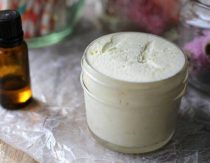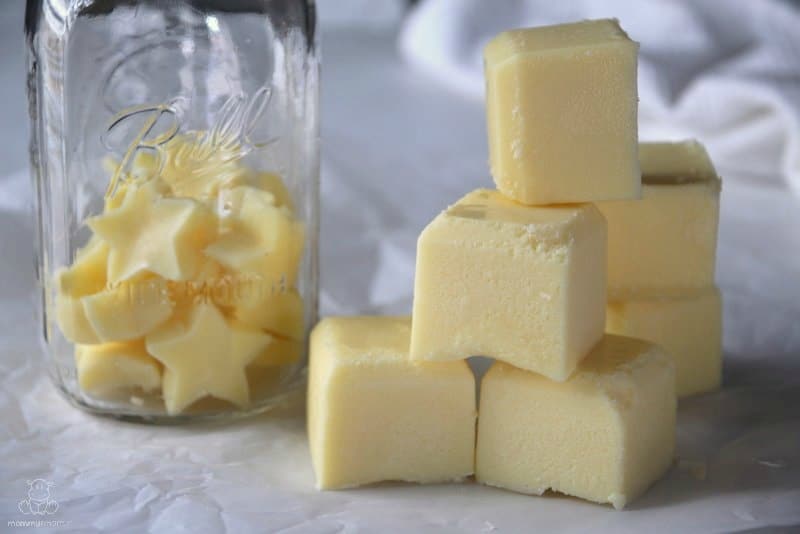
My list of kitchen essentials looks a *little* different from the many of the suggestions found in the 1887 White House Cookbook – which includes a fish kettle, coal shovel and ash bucket – but there are some things time just can’t improve on. One of those is the use of wholesome fats such as tallow, which can be used in cooking, candle making, skincare and more.
Although it may sound intimidating, rendering tallow is incredibly easy and takes just a few minutes of hands-on time. I’ll share my step-by-step guide later on in the post, but first let’s dive into some of the most frequently asked questions about this healthy traditional fat.
What is tallow?
Tallow is rendered beef or lamb fat. Before unhealthy vegetable oils took over our kitchens, tallow was often used for frying because it’s stable at high temperatures. It also contains several components that are thought to be beneficial, including:
- Conjugated linoelic acid (CLA) – Studies suggest that CLA increase fat metabolism, help regulate the immune system, and promote heart health. (1) (2)
- Vitamin K2 – This is the elusive “X Factor” studied by Weston A. Price, DDS, who authored Nutrition and Physical Degeneration. It supports bone health, heart health and optimal brain function. (3)
- Omega 3 fatty acids – Our bodies can’t make omega 6 or omega 3 fatty acids, yet they are essential for health. We have to obtain them from food in a healthy ratio for optimal health. Most of us consume too much omega 6 and not enough omega 3. Beef tallow contains a ratio of omega 6:3 that considered more balanced and beneficial. (4)
Another common question is how tallow is different from lard. The answer is that lard is rendered in the exact same way as tallow, but it’s derived from pork and has a different nutrient profile. I’ve covered those details in this post on rendering lard.
4 Uses For Beef Tallow
- Cooking, frying, and baking – Use as you would coconut oil or butter
- Tallow soap or shampoo bar soap
- Nourishing skin (tallow has lots of benefits for skin and it’s super easy to make into whipped tallow balm)
- Making candles – Some people have used tallow in place of coconut oil when making beeswax candles with good results. I’m not a fan of the way tallow smells while burning so I personally wouldn’t use it unless I was making candles to for emergencies such as power outages.
Sourcing Beef Tallow
Before you run out to your local butcher shop to buy what they have on hand, consider this: An analysis found that tallow obtained from grass-fed beef had four times more omega 3 fatty acids than grain fed. (5)
Also, the CLA content of milk from grass-fed cows is as much as five times higher than when cows are fed 50% silage and 50% grain. Although we’re talking today about tallow and not milk, it’s likely that the CLA content of tallow is higher when derived from grass-fed beef fat. (6)
Another thing to consider is that antibiotics and other unwanted substances given to conventionally-raised cows are likely to be stored in their fat. For this reason, I recommend obtaining beef suet from pastured sources like this one.
How To Render Tallow (Step-By-Step Guide)
What you’ll need:
- grass-fed beef suet (find it here)
- slow cooker (this is what I used)
- food processor
- sharp knife
- cutting board
- Jar
- Silicone ice cube molds – optional (I used these and these)
Chill the suet in the fridge to make it easier to work with, then cut it into small chunks. Trim away any meat or gristle you see as you cut, but don’t stress about getting every little piece. What you miss can be strained out at the end, so just get as much as you can.
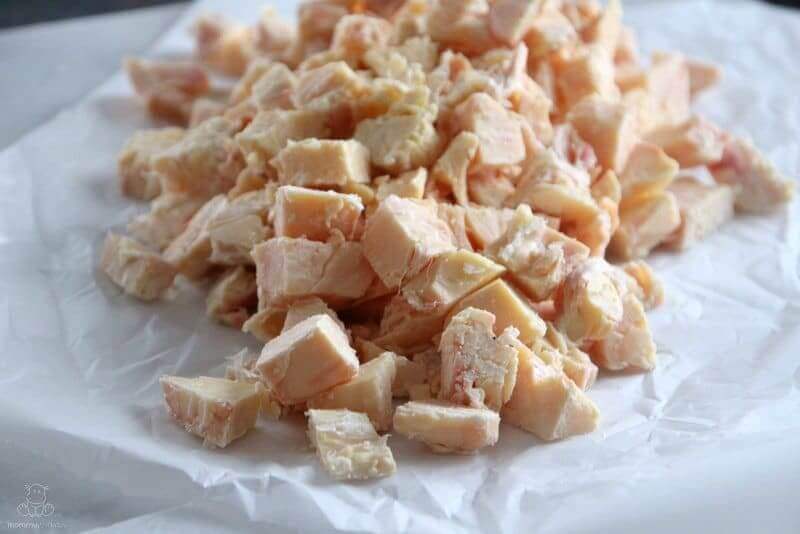
Place the chunks in a food processor and grind until they the suet looks something like this:
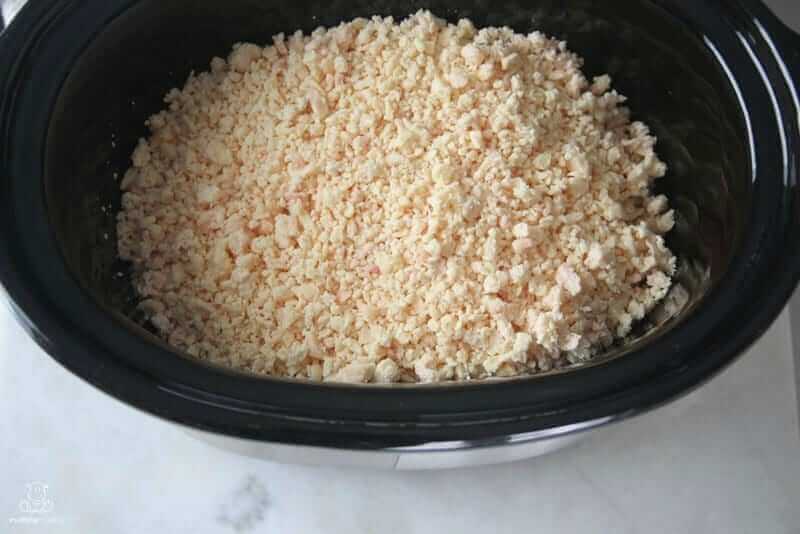
Add the suet to a slow cooker as pictured above and set the temperature to low so that the fat begins to melt. I usually place my slow cooker on the back porch for this step because although I don’t mind moderate amounts of tallow while cooking, rendering a large amount creates a strong scent in my kitchen that I’m not a fan of.
Your total cook time will depend on how much suet you used, but you’ll know it’s ready when the little pieces of gristle you couldn’t trim away are golden brown and floating at the top of the melted fat. When I used about 2 pounds my cook time was about 7 hours.
Strain the tallow by pouring everything through a colander that has been lined with a cheesecloth.

At this point you can pour the tallow into a jar for storage, but the problem with that is if you store your tallow in the fridge or freezer to extend its shelf life, you’ll find that the tallow becomes very hard and difficult to remove from the jar.
For that reason, I like to pour my tallow into silicone ice cube molds and then place them in the fridge for about an hour to harden. Once they are firm, I pop them out of the molds and place them in a jar. Each cube is just about what I need for frying something in a pan, which makes it super easy to grab what I need.
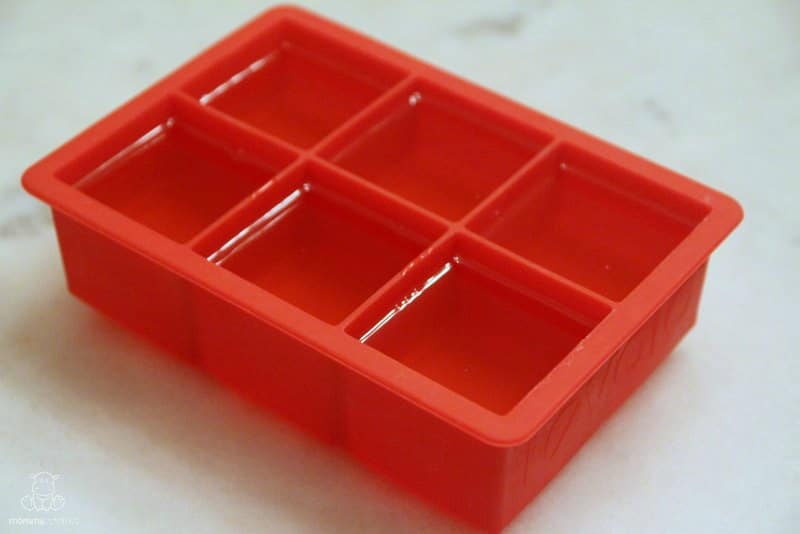
I recommend storing tallow at room temperature for about a month, or in the fridge for several months. It can also be stored in the freezer for over a year.
Source for this article:
1. Blankson, H et. al. (2000) Conjugated linoleic acid reduces body fat mass in overweight and obese humans. Retrieved from https://www.ncbi.nlm.nih.gov/pubmed/11110851
2. Sailas, Benjamin et. al. (2009) Conjugated linoleic acids as functional food: an insight into their health benefits. Retrieved from https://www.ncbi.nlm.nih.gov/pmc/articles/PMC2754987/
3. Rheaume-Bleue, Kate. (2013) Vitamin K2 and the Calcium Paradox
4. Daley, Cynthia et. al. (2010) A review of fatty acid profiles and antioxidant content in grass-fed and grain-fed beef. Retrieved from https://www.ncbi.nlm.nih.gov/pmc/articles/PMC2846864/
5. Masterjohn, Christopher. (2014) Fatty Acid Analysis of Grass-fed and Grain-fed Beef Tallow. Retrieved from https://www.westonaprice.org/health-topics/know-your-fats/fatty-acid-analysis-of-grass-fed-and-grain-fed-beef-tallow/
6. Harris, Lynette. CLA: The Modern Food Chains Weak Link. Retrieved from https://extension.usu.edu/dairy/files/cla

